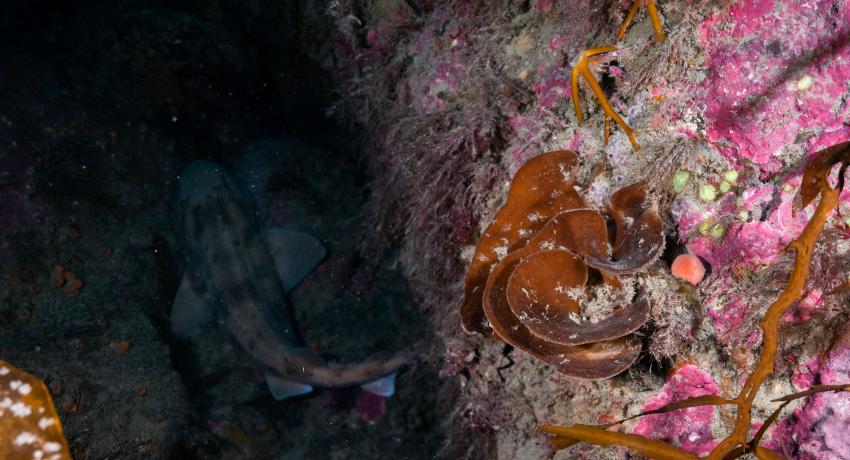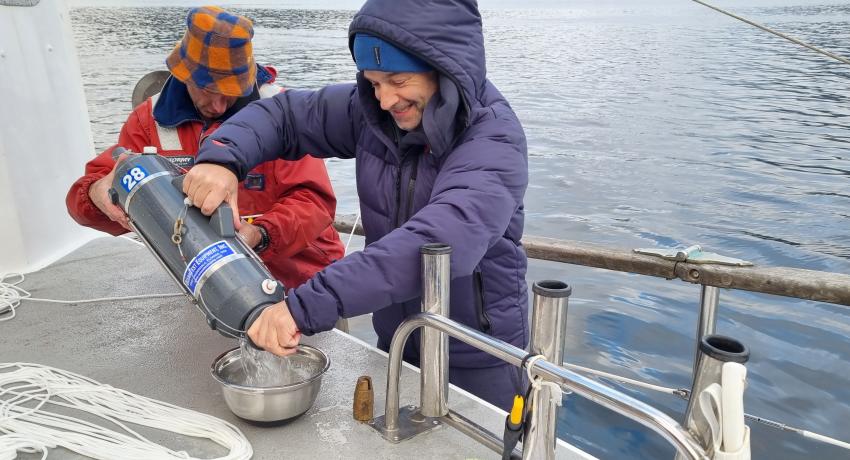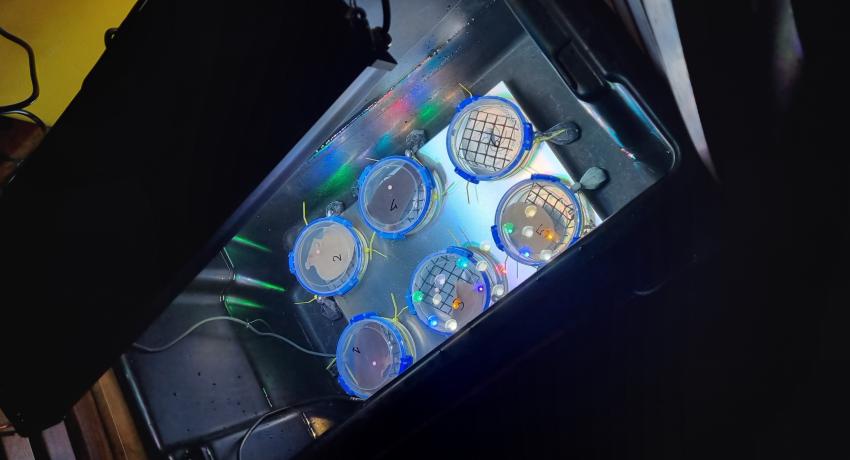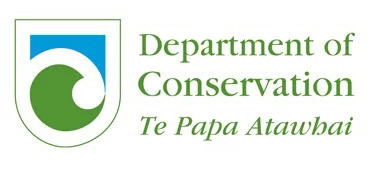Photo of bleached sponge in Fiordland. Supplied by Professor James Bell (VUW)
In May 2022 researchers from my research group, who were working in Fiordland noticed something very unusual in the shallow waters of Te Puaitaha/Breaksea Sound, thousands of the ‘bleached’ white sponges. On closer inspection the sponges were all the same species, the cup sponge Cymastella lamellata, and this bleaching event was subsequently confirmed throughout Tamatea/Dusky, Te Puaitaha/Breaksea and Doubtful/Patea Sounds, and is likely to have occurred throughout the wider Fiordland Marine Area (FMA). This sponge species is actually one of the most abundant species throughout the FMA, and we now estimate that many millions of sponges have been effected. While sponge bleaching has been reported from tropical areas, and also four years ago for some deeper water sponges in Tasmania, this is the most widespread case of bleaching ever reported in temperate waters anywhere in the world.
What is sponge bleaching? Sponges live in association with many symbionts, and which are thought to be critical to their survival and ability to deal with stress. In the case of Cymbastella, it contains photosynthetic symbionts. There is some debate as to whether these symbionts are cyanobacteria or diatoms, and my group expects to clear up this question in the coming months. Sponge bleaching occurs when the sponge become stressed and the symbionts either leave the sponge or the sponge expels the symbionts. We know very little about this process compared to the bleaching that has been widely reported in the tropics for corals. The sponges look bleached white as the symbionts give the sponge its colour and once lost the underlying tissue can be seen.
What causes sponges bleaching? We know very little about the process of sponge bleaching, but what we do know is that the Fiordland region experienced an extreme temperature event during May 2022. Modelling by Dr Rob Smith from Otago University has shown the temperature was more than 5°C warmer than normal, and this heat wave was correlated with the bleaching event. High temperatures and associated accumulated heat (i.e. the duration of warm temperatures) are known to cause bleaching in corals as well as sponges from the tropics. We believe this extreme event is what caused the relationship between the sponge and its symbionts to breakdown and the sponges to bleach.
Why should we care about the sponges? Sponges are the most abundant animals living on the rocky walls across the FMA. They are suspension feeders, meaning they pumping large volumes of water through their bodies and feed on the bacteria and phytoplankton in the water. They are thought to then recycle this food material to organisms living on the sea floor. Our research is currently working out how important this link is, but we estimate in Doubtful Sound/Patea that on average the sponges pump all the water in the sound through their bodies once every few months. If we lose the sponges it is likely to have impacts on other organisms, particularly rocky reef-associated organisms, like lobsters and fish, as food chains will be disrupted.
New steps: In June we visited the Tamatea/Dusky and Te Puaitaha/Breaksea Sounds to investigate the bleaching further. We found the sponges were still alive without their symbionts, but the symbionts left in the bleached sponges were severely compromised. The bleached sponges also seem more susceptible to fish predation, so it might not be the bleaching that kills them, but the loss of the symbionts means the sponges become more attractive to fish as food. We will be working over the coming months and years to understand the mechanisms and consequences of this bleaching event and how temperature may have effected other sponge species in the fiords. Monitoring will be a critical component of this, and this bleaching event highlights the importance of long-term monitoring, which really needs to be done more extensively and regularly in the fiords.
Opportunities for research funding in the fiords are very limited. We are currently looking for private funding sources to support this important research. Should you be interested please contact Professor James Bell (james.bell@vuw.ac.nz).
Here's a video supplied by Professor James Bell showing the sponge bleaching, and you can listen to a 23 June 2022 Radio NZ item about the sponge bleaching here.







